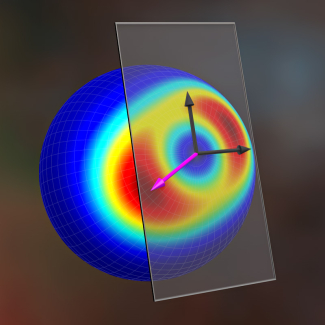Leading the way in quantum sensing advancements, JILA, a renowned institute at the forefront of quantum sensing research, has once again proven its prowess. In a new Physics Magazine article, JILA graduate student Jarrod Reilly was highlighted in his work developing a groundbreaking approach that promises to redefine the capabilities of quantum sensors.
Quantum sensors, which employ phenomena like entangled states of light, have been instrumental in applications such as the LIGO gravitational wave detector. This detector harnesses these entangled states to detect minuscule distance changes in gravitational waves.
According to the Physics Magazine article:
“Typically, quantum sensors use systems prepared in special quantum states known as probe states. Finding the ideal probe state for a given measurement is a focus of many research endeavors. Now Jarrod Reilly of the University of Colorado Boulder and his colleagues have developed a new framework for optimizing this search. The approach could aid in developing quantum sensors that surpass the standard quantum limit—the minimum noise level of a device that can be obtained without special quantum-state preparation—and so could dramatically increase measurement sensitivity.”
Reilly, along with JILA graduate student John Wilson and JILA Fellow Murray Holland, who is also a CU Boulder physics professor, were inspired by classical physics to develop their new method. The team’s approach discerns various changes in a quantum system using a mathematical algorithm, thereby determining its sensitivity to specific parameters. Such advancements not only promise to refine existing quantum sensors but also hold the potential for quantum sensors to estimate multiple parameters simultaneously, a requirement in many imaging and metrology applications.
The article continues: “The method of Reilly and his colleagues flips that search protocol on its head.” The team published their results recently in Physical Review Letters.
Given the revolutionary perspective brought forward by the JILA team, emphasizing high-precision measurements, the quantum technology landscape seems poised for significant advancements and a deeper understanding of quantum mechanics in the coming years.
Written by Kenna Hughes-Castleberry



 The Physics Frontiers Centers (PFC) program supports university-based centers and institutes where the collective efforts of a larger group of individuals can enable transformational advances in the most promising research areas. The program is designed to foster major breakthroughs at the intellectual frontiers of physics by providing needed resources such as combinations of talents, skills, disciplines, and/or specialized infrastructure, not usually available to individual investigators or small groups, in an environment in which the collective efforts of the larger group can be shown to be seminal to promoting significant progress in the science and the education of students. PFCs also include creative, substantive activities aimed at enhancing education, broadening participation of traditionally underrepresented groups, and outreach to the scientific community and general public.
The Physics Frontiers Centers (PFC) program supports university-based centers and institutes where the collective efforts of a larger group of individuals can enable transformational advances in the most promising research areas. The program is designed to foster major breakthroughs at the intellectual frontiers of physics by providing needed resources such as combinations of talents, skills, disciplines, and/or specialized infrastructure, not usually available to individual investigators or small groups, in an environment in which the collective efforts of the larger group can be shown to be seminal to promoting significant progress in the science and the education of students. PFCs also include creative, substantive activities aimed at enhancing education, broadening participation of traditionally underrepresented groups, and outreach to the scientific community and general public.